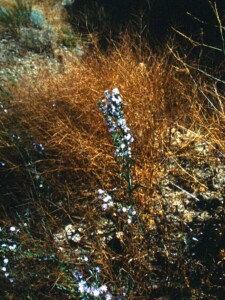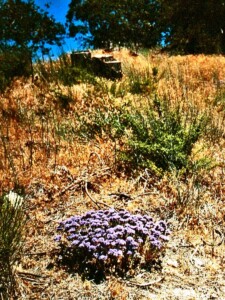FLORA
Our Native Plants
Using native plants in your own garden can reduce yardwork, lower water bills and even mitigate fire risk*. They also restore the character of a place—a unique regional quality that can’t be replicated in full anywhere else. Native plants increase biodiversity by supporting native animals, from birds to bugs, in ways many non-native plants are unable to do. In this way they aid in restoring our local ecosystem too. Adding some native plants to your home garden no matter its size can make a difference to you and your community, and we’re here to help!
At the Arboretum you’ll find a large variety of flora and naturally occurring wildflowers in the spring and summer such as Penstemon, Buckwheat, California Poppy, Baby Blue Eyes, Iris and Lupine. Native herbaceous perennials and introduced native plants also are in the gardens, which emphasize non-invasive species that easily thrive in our local mountains.
Not all of our plants are native to the San Bernardino Mountains or California. Some plants, including Blue spruce and Buddleja, aren’t natives. Some are even invasive species. The gardens contain more than 30 species that are identified with signs listing the botanical family, genus, species and common name.
Below is a comprehensive gallery of the many plants that call the Arboretum and the San Bernardino Mountains home.
All photos below are generously provided and copyrighted by © Bob Reed
Plants of Heaps Peak Arboretum
![[Arctostaphylos glauca]](https://hparboretum.com/wp-content/uploads/cache/2022/01/arctostaphylos3/1334786836.jpg)
![California Buckwheat [Eriogonum fasiculatum]](https://hparboretum.com/wp-content/uploads/cache/2022/01/eriogonumfasiculatum3/3121953076.jpg)
![California False Indigo [Amorpha]](https://hparboretum.com/wp-content/uploads/cache/2022/01/amorpha1/3347948699.jpg)
![California Wild Rose [Rosa californica]](https://hparboretum.com/wp-content/uploads/cache/2022/01/rosa-californica_close_/4005873771.jpg)
![Coulter Pine [Pinus coulteri]](https://hparboretum.com/wp-content/uploads/cache/2022/01/coulterpine1/3394632456.jpg)
![[Clarkia unguiculata]](https://hparboretum.com/wp-content/uploads/cache/2022/01/clarkia1/1670453342.jpg)
![Evening primrose [Oenothera elata]](https://hparboretum.com/wp-content/uploads/cache/2022/01/eveningprimrose1/3217497248.jpg)
![Evergreen candytuft [Iberis sempervirons]](https://hparboretum.com/wp-content/uploads/cache/2022/01/iberis-sempervirons_close_/54571707.jpg)
![Flannel Bush [Fremontodendron californicum]](https://hparboretum.com/wp-content/uploads/cache/2022/01/fremontodendron-calif_whole_/481790695.jpg)
![Golden Currant [Ribes aureum]](https://hparboretum.com/wp-content/uploads/cache/2022/01/ribes-aureum_close_/1614837074.jpg)

![Oregon Grape [Mahonia aquifolium]](https://hparboretum.com/wp-content/uploads/cache/2022/01/mahonia_close_/841486379.jpg)
![Purple Rock Rose [Cistus Purpureus]](https://hparboretum.com/wp-content/uploads/cache/2022/01/rockrose4/1597505943.jpg)
![Sierra Gooseberry [Ribes roezlii]](https://hparboretum.com/wp-content/uploads/cache/2022/01/ribes-roezlii_close_/3960784170.jpg)
![Spanish Broom [Spartium junceum]](https://hparboretum.com/wp-content/uploads/cache/2022/01/spartium1/2232022088.jpg)
![Spreading Dogbane [Apocynum androsaemifolium]](https://hparboretum.com/wp-content/uploads/cache/2022/01/apocynum-androsaemifolium_w/2293549452.jpg)
![Sticky Cinquefoil [Potentilla glandulosa]](https://hparboretum.com/wp-content/uploads/cache/2022/01/potentilla-glandulosa_close_/3799535700.jpg)
![Sugar Pine [Pinus lambertiana]](https://hparboretum.com/wp-content/uploads/cache/2022/01/sugarpine3/1704035928.jpg)
![Western Columbine [Aquilegia formosa]](https://hparboretum.com/wp-content/uploads/cache/2022/01/aquilegia-formosa/4014119223.jpg)
![Western Redbud [Cercis occidentalis]](https://hparboretum.com/wp-content/uploads/cache/2022/01/circis-occidentalis/2773161128.jpg)
Flowering Plants of the San Bernardino Mountains
These plants are found across the span of the San Bernardino Mountains.
Important Note About the Gallery
All photos are copyrighted and provided by Bob Reed, former board president of Rim of the World Interpretive Association (ROWIA). These photos are the result of a seven-year, mountain-wide flowering-plant search devoted to continually adding as many photos to ROWIA’s original website as possible between 2005 and 2011. This photo collection is comprehensive and contains plant species that are variously labeled as rare, threatened, critically endangered, common, roadside and invasive. (The photos shown here don’t include those designations.) All San Bernardino Mountain trees are included, as are most wildflowers, chaparral plants and herbaceous perennials. Grasses are omitted. Many plants required a four-wheel-drive, high-clearance vehicle to reach. Rare and protected plant species are found almost exclusively in the Big Bear Lake area and Holcomb Valley. If you have questions about the collection, please send them to junglebobreed@gmail.com.
*California Native Plant Society Fire Recovery Guide: https://www.cnps.org/give/priority-initiatives/fire-recovery/defensible-space
![Arizona cypress [Cupressus arizonica]](https://hparboretum.com/wp-content/uploads/cache/2022/01/azcypress1/2205311049.jpg)
![Arroyo willow [Salix lasiolepis]](https://hparboretum.com/wp-content/uploads/cache/2022/01/arroyowillow1/3636040580.jpg)
![Arroyo willow [Salix lasiolepsis]](https://hparboretum.com/wp-content/uploads/cache/2022/01/arroyowillow2/2309415408.jpg)
![Baby Blue Eyes [Nemophila menziesii]](https://hparboretum.com/wp-content/uploads/cache/2022/01/nemophila-menziesii_close_/1098199292.jpg)
![Baby Blue Eyes [Nemophila menziesii]](https://hparboretum.com/wp-content/uploads/cache/2022/01/nemophila-menziesii_whole_/980267407.jpg)
![Bee Balm [Monarda]](https://hparboretum.com/wp-content/uploads/cache/2022/01/monarda3/3671457456.jpg)
![Bee Balm [Monarda]](https://hparboretum.com/wp-content/uploads/cache/2022/01/momarda-sp_close_/3011102932.jpg)
![Bee Balm [Monarda]](https://hparboretum.com/wp-content/uploads/cache/2022/01/momarda-sp_whole_/753188489.jpg)
![Bee Balm [Monarda]](https://hparboretum.com/wp-content/uploads/cache/2022/01/monarda-sp_close_/2701199462.jpg)
![Bee Balm [Monarda]](https://hparboretum.com/wp-content/uploads/cache/2022/01/monarda-sp_whole_/3298628119.jpg)
![Bitter Dogbane [Apocynum androsaemifolium]](https://hparboretum.com/wp-content/uploads/cache/2022/01/apocynumandrosaemifolium3/3379077715.jpg)
![Bitter Dogbane [Apocynum androsaemifolium]](https://hparboretum.com/wp-content/uploads/cache/2022/01/dogbane1/3855469391.jpg)
![Bitter Dogbane [Apocynum androsaemifolium]](https://hparboretum.com/wp-content/uploads/cache/2022/01/dogbane2/3260198788.jpg)
![Bitter Dogbane [Apocynum androsaemifolium]](https://hparboretum.com/wp-content/uploads/cache/2022/01/apocynum-androsaemifolium/3325442406.jpg)
![Elderberry [Sambucus nigra]](https://hparboretum.com/wp-content/uploads/cache/2022/01/sambucus2/2682225696.jpg)
![Bolander's Woodland Star [Lithophragma bolanderi]](https://hparboretum.com/wp-content/uploads/cache/2022/01/lithophragma1/288032458.jpg)

![Brackenfern [Pteridium aquilinum]](https://hparboretum.com/wp-content/uploads/cache/2022/01/brake1/2345451910.jpg)
![Brackenfern [Pteridium aquilinum]](https://hparboretum.com/wp-content/uploads/cache/2022/01/brake2/708682364.jpg)
![Butterfly Bush [Buddleja sp.]](https://hparboretum.com/wp-content/uploads/cache/2022/01/buddleja-sp_close_/3566388099.jpg)
![Butterfly Bush [Buddleja sp.]](https://hparboretum.com/wp-content/uploads/cache/2022/01/buddleja-sp_whole_/3798185734.jpg)
![California Aster [Lessingia filaginifolia]](https://hparboretum.com/wp-content/uploads/cache/2022/01/lessingiafilaginifolia2/3833712982.jpg)
![California Aster [Lessingia filaginifolia]](https://hparboretum.com/wp-content/uploads/cache/2022/01/lessingia-pilaginipolia_clo_/1573540329.jpg)
![California Black Oak [Quercus kelloggii]](https://hparboretum.com/wp-content/uploads/cache/2022/01/calblackoak1/1430124276.jpg)
![California black oak [Quercus kelloggii]](https://hparboretum.com/wp-content/uploads/cache/2022/01/calblackoak2/724084155.jpg)
![California Buckwheat [Eriogonum fasiculatum]](https://hparboretum.com/wp-content/uploads/cache/2022/01/eriogonum-fasiculatum_close_/3935119474.jpg)
![California Buckwheat [Eriogonum fasiculatum]](https://hparboretum.com/wp-content/uploads/cache/2022/01/eriogonum-fasiculatum_whole_/2398982578.jpg)
![California False Indigo [Amorpha]](https://hparboretum.com/wp-content/uploads/cache/2022/01/amorpha2/2564653151.jpg)
![California Fuchsia [Epilobium canum]](https://hparboretum.com/wp-content/uploads/cache/2022/01/epilobium-canum_close_/1319260927.jpg)
![California Fuchsia [Epilobium canum]](https://hparboretum.com/wp-content/uploads/cache/2022/01/epilobium-canum_whole_/3200462680.jpg)
![Goldenrod [Solidago velutina ssp. californica]](https://hparboretum.com/wp-content/uploads/cache/2022/01/goldenrod1/286056460.jpg)
![California Goldenrod [Solidago velutina ssp. californica]](https://hparboretum.com/wp-content/uploads/cache/2022/01/goldenrod2/3877762343.jpg)
![California Goldenrod [Solidago velutina ssp. californica]](https://hparboretum.com/wp-content/uploads/cache/2022/01/goldenrod4/676600363.jpg)
![California Wild Rose [Rosa californica]](https://hparboretum.com/wp-content/uploads/cache/2022/01/rosa-californica_hips_/564141984.jpg)
![California Wild Rose [Rosa californica]](https://hparboretum.com/wp-content/uploads/cache/2022/01/rosa-californica_whole_/2378162692.jpg)
![Cinquefoil [Potentilla sp.]](https://hparboretum.com/wp-content/uploads/cache/2022/01/potentillag/3200804732.jpg)
![Coffeeberry [Frangula rubra]](https://hparboretum.com/wp-content/uploads/cache/2022/01/coffeeberry1/1193598666.jpg)
![Coffeeberry [Frangula rubra]](https://hparboretum.com/wp-content/uploads/cache/2022/01/coffeeberry2/959548805.jpg)
![Common Goldenstar [Bloomeria]](https://hparboretum.com/wp-content/uploads/cache/2022/01/bloomeria1/3671110215.jpg)
![Common Goldenstar [Bloomeria]](https://hparboretum.com/wp-content/uploads/cache/2022/01/bloomeria2/3829452701.jpg)


![Coulter Pine [Pinus coulteri]](https://hparboretum.com/wp-content/uploads/cache/2022/01/coulterpine2/4203633004.jpg)
![Coulter Pine [Pinus coulteri]](https://hparboretum.com/wp-content/uploads/cache/2022/01/pinuscoulteri1/3988860208.jpg)
![Coulter Pine [Pinus coulteri]](https://hparboretum.com/wp-content/uploads/cache/2022/01/pinuscoulteri2/3605172330.jpg)
![Coulter's Matilija Poppy
[Romneya coulteri]](https://hparboretum.com/wp-content/uploads/cache/2022/01/matilijapoppy1/1098823909.jpg)
![Coulter's Matilija Poppy
[Romneya coulteri]](https://hparboretum.com/wp-content/uploads/cache/2022/01/matilijapoppy2/2705664404.jpg)
![Currant [Ribes]](https://hparboretum.com/wp-content/uploads/cache/2022/01/ribes1/1051443187.jpg)
![Desert MIlkweed [Asclepias erosa]](https://hparboretum.com/wp-content/uploads/cache/2022/01/asclepias-erosa_close_/2150130104.jpg)
![Desert Milkweed [Asclepias erosa]](https://hparboretum.com/wp-content/uploads/cache/2022/01/asclepias-erosa_whole_/3687389304.jpg)
![Elderberry [Sambucus]](https://hparboretum.com/wp-content/uploads/cache/2022/01/sambucus/106549327.jpg)
![Elegant Clarkia or Mountain Garland [Clarkia unguiculata]](https://hparboretum.com/wp-content/uploads/cache/2022/01/clarkia2/1019296922.jpg)

![Evening primrose [Oenothera elata]](https://hparboretum.com/wp-content/uploads/cache/2022/01/eveningprimrose2/1800645406.jpg)
![Evergreen candytuft [Iberis sempervirons]](https://hparboretum.com/wp-content/uploads/cache/2022/01/iberis-sempervirons_whole_/10995980.jpg)
![Fernleaf Yarrow [Achillea filipendulina]](https://hparboretum.com/wp-content/uploads/cache/2022/01/achillea-fulipenduluna/910466143.jpg)
![Fernleaf Yarrow [Achillea filipendulina]](https://hparboretum.com/wp-content/uploads/cache/2022/01/achillea-fulipenduluna_whol_/564778935.jpg)
![Feverfew [Tanacetum parthenium]](https://hparboretum.com/wp-content/uploads/cache/2022/01/feverfew1/3164279721.jpg)
![Feverfew [Tanacetum parthenium]](https://hparboretum.com/wp-content/uploads/cache/2022/01/feverfew2/2546957826.jpg)
![Flannel Bush [Fremontodendron californicum]](https://hparboretum.com/wp-content/uploads/cache/2022/01/fremontodendron-californica/2515685946.jpg)
![Golden C urrant [Ribes aureum]](https://hparboretum.com/wp-content/uploads/cache/2022/01/ribes-aureum_whole_/4110638215.jpg)
![Golden Eardrops [Ehrendorferia chrysantha]](https://hparboretum.com/wp-content/uploads/cache/2022/01/dicentra1/324443865.jpg)
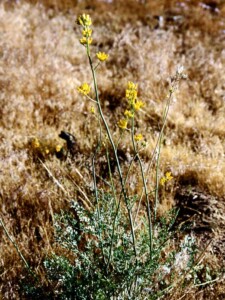

![Grand collomia [Collomia grandiflora]](https://hparboretum.com/wp-content/uploads/cache/2022/01/grandcollomia1/295227515.jpg)

![Gum Rock Rose [Cistus ladanife]](https://hparboretum.com/wp-content/uploads/cache/2022/01/rockrose1/2242822581.jpg)
![Gum Rock Rose [Cistus ladanifer]](https://hparboretum.com/wp-content/uploads/cache/2022/01/rockrose2/160488129.jpg)
![Hartweg's Iris [Iris hartwegii]](https://hparboretum.com/wp-content/uploads/cache/2022/01/iris-hartwegii_close_/3021322585.jpg)
![Hartweg's Iris [Iris hartwegii]](https://hparboretum.com/wp-content/uploads/cache/2022/01/iris-hartwegii_wholee/2362664725.jpg)
![Knobcone Pine [Pinus attentuata]](https://hparboretum.com/wp-content/uploads/cache/2022/01/knobcone1/3284342691.jpg)
![Knobcone Pine [Pinus attentuata]](https://hparboretum.com/wp-content/uploads/cache/2022/01/knobcone2/2466129143.jpg)
![Mariposa lily [Calochortus]](https://hparboretum.com/wp-content/uploads/cache/2022/01/mariposalily1/4290527670.jpg)
![Mariposa lily [Calochortus]](https://hparboretum.com/wp-content/uploads/cache/2022/01/mariposalily2/2929931202.jpg)
![Miner's Lettuce [Claytonia perfoliata]](https://hparboretum.com/wp-content/uploads/cache/2022/01/claytonia-perfoliata/2087050819.jpg)
![Mock Orange [Philadelphus lewisii]](https://hparboretum.com/wp-content/uploads/cache/2022/01/mockorange1/2784966403.jpg)
![Mock Orange [Philadelphus Lewisii]](https://hparboretum.com/wp-content/uploads/cache/2022/01/mockorange2/3199719536.jpg)
![Mountain Coyote Mint [Monardella]](https://hparboretum.com/wp-content/uploads/cache/2022/01/monardella3/2566902832.jpg)
![Mountain Coyote Mint [Monardella]](https://hparboretum.com/wp-content/uploads/cache/2022/01/monardella1/1057950147.jpg)
![Mountain Coyote MInt [Monardella]](https://hparboretum.com/wp-content/uploads/cache/2022/01/monardella2/2714034970.jpg)

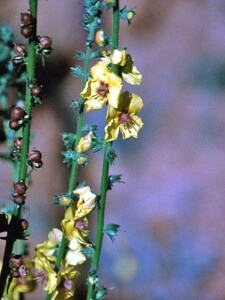
![Muskflower [Mimulus moschatus]](https://hparboretum.com/wp-content/uploads/cache/2022/01/muskflower1/3168415849.jpg)
![Muskflower [Mimulus moschatus]](https://hparboretum.com/wp-content/uploads/cache/2022/01/muskflower2/2811420442.jpg)
![Naked Buckwheat [Eriogonium nudum]](https://hparboretum.com/wp-content/uploads/cache/2022/01/eriogonium-mudum2/3241040937.jpg)
![Narrow [Asclepias fascicularis]](https://hparboretum.com/wp-content/uploads/cache/2022/01/asclepias4/2124351716.jpg)
![Narrow Leaf Milkweed [Asclepias fascicularis]](https://hparboretum.com/wp-content/uploads/cache/2022/01/asclepias5/748841184.jpg)
![Narrow Leaf Milkweed [Asclepias fascicularus]](https://hparboretum.com/wp-content/uploads/cache/2022/01/asclepias-fasciculatum_clos_/1180366525.jpg)
![Narrow Leaf Milkweed [Asclepias fascicularus]](https://hparboretum.com/wp-content/uploads/cache/2022/01/asclepias-fasciculatum_whol_/505636327.jpg)
![Nightshade [Solanum]](https://hparboretum.com/wp-content/uploads/cache/2022/01/solanum1/1842494020.jpg)
![Nude Buckwheat [Eriogonium nudum]](https://hparboretum.com/wp-content/uploads/cache/2022/01/eriogonium-mudum1/1512140083.jpg)
![Oregon Grape [Mahonia aquifolium]](https://hparboretum.com/wp-content/uploads/cache/2022/01/mahonia_whole_/1095490242.jpg)
![Pacific Dogwood [Cornus nuttallii]](https://hparboretum.com/wp-content/uploads/cache/2022/01/cornus-nuttallii3/3349358796.jpg)
![Pacific Dogwood [Cornus nuttallii]](https://hparboretum.com/wp-content/uploads/cache/2022/01/cornus-nuttallii4/3638957868.jpg)

![Pacific Dogwood [Cornus nuttallii]](https://hparboretum.com/wp-content/uploads/cache/2022/01/cornus-nuttallii_close_/4185671989.jpg)
![Pacific Dogwood [Cornus nuttallii]](https://hparboretum.com/wp-content/uploads/cache/2022/01/cornus-nuttallii_whole_/3200849115.jpg)





![Rockcress [Arabis]](https://hparboretum.com/wp-content/uploads/cache/2022/01/arabis1/720115600.jpg)
![Rockcress [Arabis]](https://hparboretum.com/wp-content/uploads/cache/2022/01/arabis2/3590885100.jpg)
![Rosy Pussypaws [Calyptridium roseum]](https://hparboretum.com/wp-content/uploads/cache/2022/01/calyptridium1/4205265694.jpg)
![Rosy Pussypaws [Calyptridium roseum]](https://hparboretum.com/wp-content/uploads/cache/2022/01/calyptridium2/2402948101.jpg)
![Scarlet Monkey Flower [Erythranthe cardinalis]](https://hparboretum.com/wp-content/uploads/cache/2022/01/scarletmonkey1/2981967731.jpg)
![Scarlet Monkey Flower [Erythranthe cardinalis]](https://hparboretum.com/wp-content/uploads/cache/2022/01/scarletmonkey2/1367778818.jpg)
![Sierra Gooseberry [Ribes roezlii]](https://hparboretum.com/wp-content/uploads/cache/2022/01/ribes-roezlii_whole_/4121624604.jpg)
![Silver Lupine [Lupinus albifrons]](https://hparboretum.com/wp-content/uploads/cache/2022/01/giantlupine1/848759197.jpg)
![Giant Lupine [Lupinus albifrons]](https://hparboretum.com/wp-content/uploads/cache/2022/01/giantlupine2/1283611346.jpg)
![Skullcap [Scutellaria]](https://hparboretum.com/wp-content/uploads/cache/2022/01/skullcap2/969006591.jpg)
![Skullcap [Scutellaria]](https://hparboretum.com/wp-content/uploads/cache/2022/01/skullcap1/843913404.jpg)
![Slender-Petaled Mustard [Thelypodium stenopetalum]](https://hparboretum.com/wp-content/uploads/cache/2022/01/Slender-Petaled-Mustard/3066102408.jpg)
![Spanish Broom [Spartium junceum]](https://hparboretum.com/wp-content/uploads/cache/2022/01/spartium2/2925369827.jpg)
![Speedwell [Veronica spicata]](https://hparboretum.com/wp-content/uploads/cache/2022/01/speedwell1/2666429609.jpg)
![Spiked Speedwell [Veronica spicata]](https://hparboretum.com/wp-content/uploads/cache/2022/01/speedwell2/1757636994.jpg)
![Spring Madia [Madia elegans]](https://hparboretum.com/wp-content/uploads/cache/2022/01/madia-elegans_close_/26236928.jpg)
![Spring Madia [Madia elegans]](https://hparboretum.com/wp-content/uploads/cache/2022/01/madia-elegans_whole_/405773622.jpg)
![Sticky Cinquefoil [Potentilla glandulosa]](https://hparboretum.com/wp-content/uploads/cache/2022/01/potentilla-glandulosa_whole_/1469043162.jpg)

![Sugar Pine [Pinus lambertiana]](https://hparboretum.com/wp-content/uploads/cache/2022/01/pinus-lambertiana/50735946.jpg)
![Thread Leaved Daisy [Erigeron filifolius]](https://hparboretum.com/wp-content/uploads/cache/2022/01/erigeron-foliosus/591806934.jpg)
![Thymeleaf Sandmat
[Euphorbia serpyllifoliaEuphorbia]](https://hparboretum.com/wp-content/uploads/cache/2022/01/euphorbia1/2040531274.jpg)
![Western Redbud [Cercis occidentalis]](https://hparboretum.com/wp-content/uploads/cache/2022/01/cercis-occidentalis_close_/1839819758.jpg)
![Western Redbud [Cercis occidentalis]](https://hparboretum.com/wp-content/uploads/cache/2022/01/cercis-occidentalis_whole_/4039883738.jpg)
![Western Serviceberry [Amelanchier]](https://hparboretum.com/wp-content/uploads/cache/2022/01/serviceberry2/3514219602.jpg)
![Western Serviceberry [Amelanchier alnifolia]](https://hparboretum.com/wp-content/uploads/cache/2022/01/amelanchier-almifolia_close_/3160354281.jpg)
![Western Serviceberry [Amelanchier alnifolia]](https://hparboretum.com/wp-content/uploads/cache/2022/01/amelanchier-almifolia_whole_/3626996777.jpg)
![White Rockrose [Cistus Hybridus]](https://hparboretum.com/wp-content/uploads/cache/2022/01/cistus-hybridus_close_/451241799.jpg)
![White Rockrose [Cistus hybridus]](https://hparboretum.com/wp-content/uploads/cache/2022/01/cistus-hybridus_whole_/4246479572.jpg)
![Yarrow [Achillea millefolium]](https://hparboretum.com/wp-content/uploads/cache/2022/01/achillea-millefolium2/4180512045.jpg)
![Yarrow [Achillea millefolium]](https://hparboretum.com/wp-content/uploads/cache/2022/01/yarrow1/509424615.jpg)
![Yarrow [Achillea millefolium]](https://hparboretum.com/wp-content/uploads/cache/2022/01/yarrow2/4103529120.jpg)
![Yarrow [Achillea millefolium]](https://hparboretum.com/wp-content/uploads/cache/2022/01/achillea-millefolium/30964703.jpg)























![Beavertail Prickly Pear [Opuntia basilaris]](https://hparboretum.com/wp-content/uploads/cache/2022/01/Opuntia-Basilaris_Close_/1691570357.jpg)

![Big Leaf Maple [Acer macrophyllum]](https://hparboretum.com/wp-content/uploads/cache/2022/01/Acermarco/4106382560.jpg)
![Big Leaf Maple [Acer macrophyllum]](https://hparboretum.com/wp-content/uploads/cache/2022/01/Acermarco4/1875215435.jpg)
![Big Leaf Maple [Acer macrophyllum]](https://hparboretum.com/wp-content/uploads/cache/2022/01/Acer/819869245.jpg)
![Big Leaf Maple [Acer macrophyllum]](https://hparboretum.com/wp-content/uploads/cache/2022/01/Acer2/2452641145.jpg)
![Blue Gilia [Gilia achilleifolia]](https://hparboretum.com/wp-content/uploads/cache/2022/01/Bluegilia/3744318145.jpg)




![Bull Thistle [Cirsium vulgare]](https://hparboretum.com/wp-content/uploads/cache/2022/01/Bullthistle/568171106.jpg)
![Bush Mallow [Malcothamnus]](https://hparboretum.com/wp-content/uploads/cache/2022/01/Bushmallow/2647658682.jpg)




![California broomrape [Orabanche californica]](https://hparboretum.com/wp-content/uploads/cache/2022/01/Calbroomrape/2775427602.jpg)




















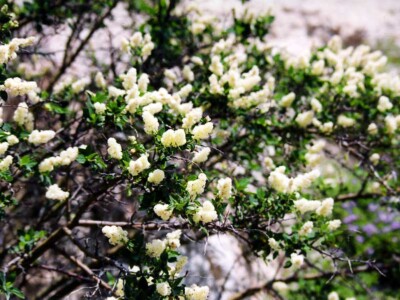



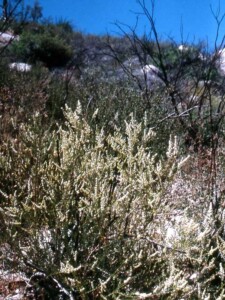




























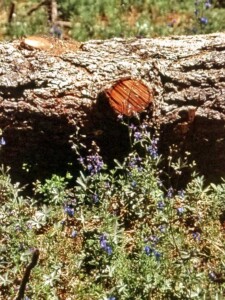








































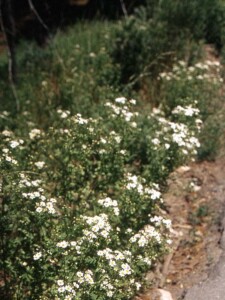
![Figwort [Scrophularia]](https://hparboretum.com/wp-content/uploads/cache/2022/01/Scrophularia/4067136905.jpg)





















![Laguna Mountains Jewelflower [Streptanthus bernardinus]](https://hparboretum.com/wp-content/uploads/cache/2022/01/Jewelflower/3090860481.jpg)






























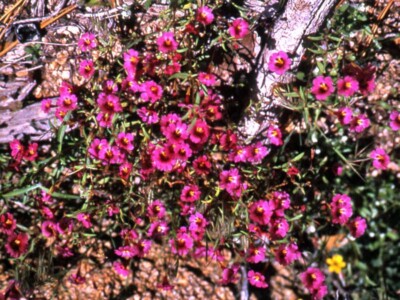
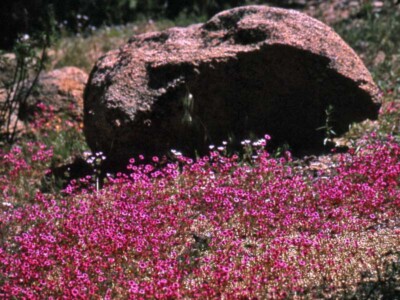




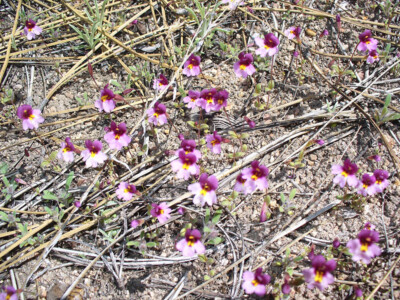



![Mojave Pricklypear [Opuntia phaeacantha]](https://hparboretum.com/wp-content/uploads/cache/2022/01/Mojavepricklypear/3162124171.jpg)
![Mojave Sand Verbena [Abronia pogonantha]](https://hparboretum.com/wp-content/uploads/cache/2022/01/Abronia/2175383938.jpg)







![Onion [Allium]](https://hparboretum.com/wp-content/uploads/cache/2022/01/allium1/2309705995.jpg)

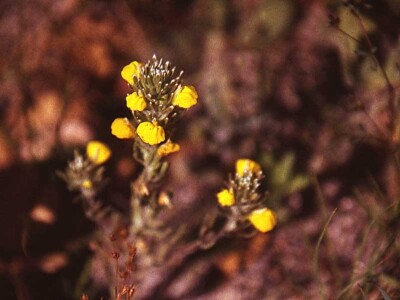






![Penstemon sp. [Penstemon spectabilis]](https://hparboretum.com/wp-content/uploads/cache/2022/01/Penstemonsp1-1/360176202.jpg)
![Penstemon sp. [Penstemon spectabilis]](https://hparboretum.com/wp-content/uploads/cache/2022/01/Penstemonsp2-1/742295286.jpg)





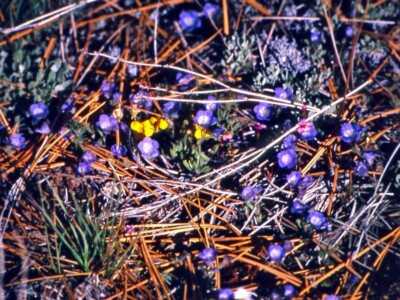














![Purple Clarkia [Clarkia purpurea]](https://hparboretum.com/wp-content/uploads/cache/2022/01/Fourspot/1173197453.jpg)






















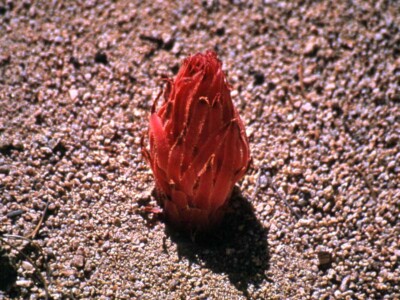

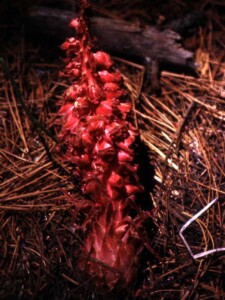























![Sugar Pine [Pinus lambertiana]](https://hparboretum.com/wp-content/uploads/cache/2022/01/Sugarpine1/810008768.jpg)





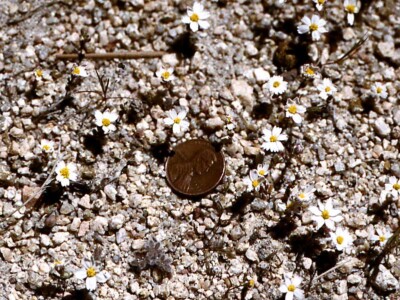
![Thymeleaf Sandmat [Euphorbia serpyllifolia]](https://hparboretum.com/wp-content/uploads/cache/2022/01/Euphorbia2-1/1454819752.jpg)



